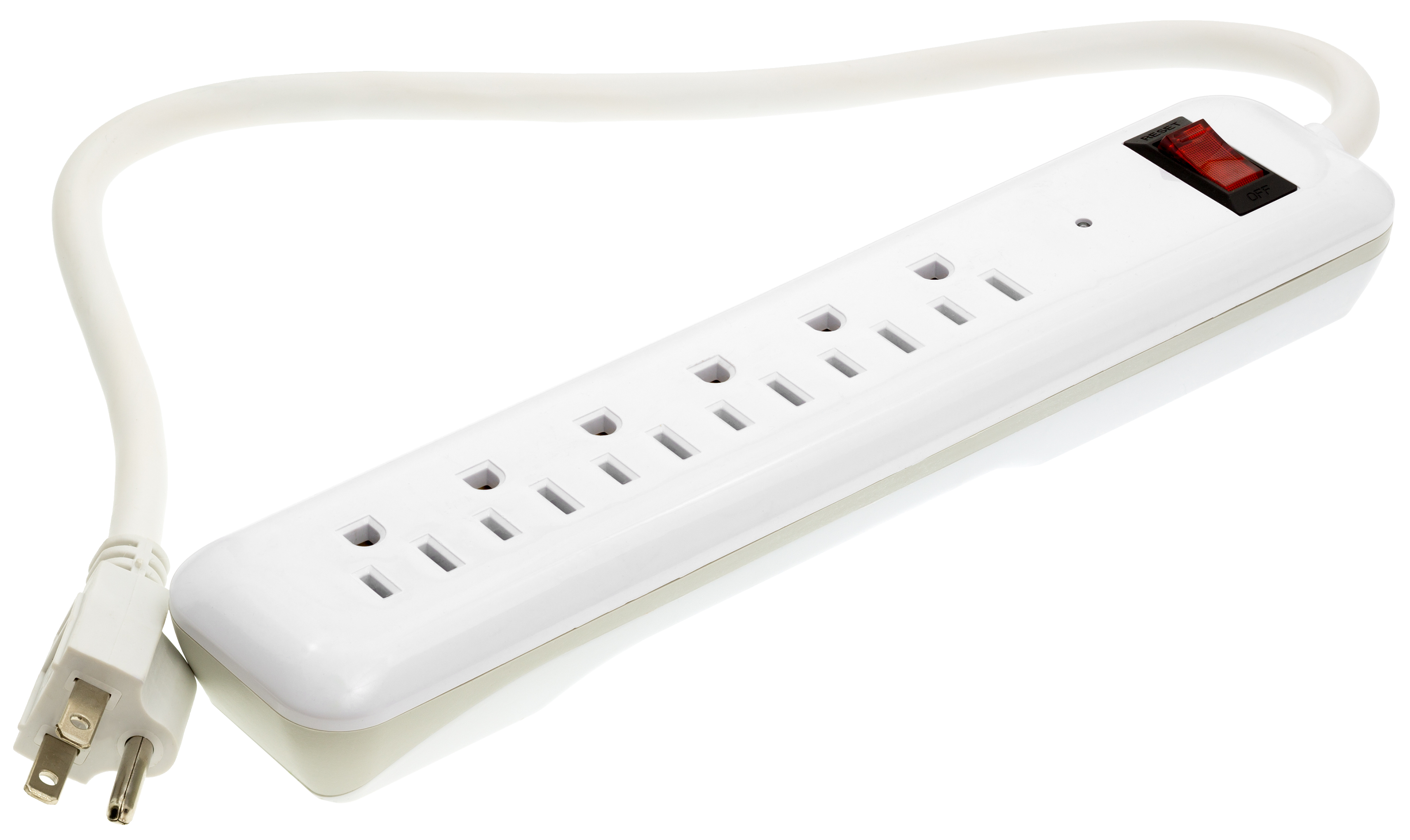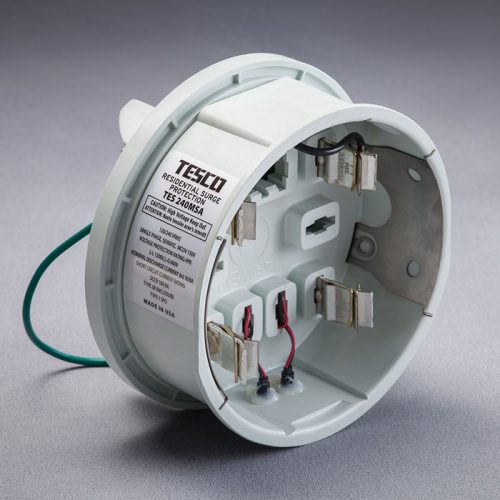To view the full print/pdf version of this issue of Currents, click here
For previous issues of Currents, visit our Currents Library
Surge Protectors 101
By: Steve Sokolowski, Marketing Associate
Email: ssokolowski@sussexrec.com
 A power surge is an unexpected increase in voltage, and it can occur from a variety of sources. Regardless of the cause, power surges can damage sensitive electronic devices and equipment in your home.
A power surge is an unexpected increase in voltage, and it can occur from a variety of sources. Regardless of the cause, power surges can damage sensitive electronic devices and equipment in your home.
Let’s take a look at common causes of power surges and how you can protect your sensitive electronics.
Lightning
This is one of the most common causes of power surges that affect homes. When lightning strikes an electrical system, the power surge must be channeled somewhere––unfortunately in many cases, it’s sent through a home. Your best bet to protect against this is to preemptively unplug all unused devices and electronics during severe thunderstorms.
Electrical Overload
This can occur when devices or appliances are plugged into an outlet that can’t handle the required amount of voltage, or if multiple devices are plugged into one outlet through an extension cord. If you’re experiencing frequent power surges due to electrical overload, it’s time to call a qualified electrician to evaluate your home’s circuits and electrical needs.
Faulty Wiring
Imperfections in a home’s wiring can also cause power surges. Damaged or exposed wires can cause spikes in voltage, creating a potentially dangerous situation. If you notice signs of faulty wiring like visible burns on outlets, buzzing sounds from outlets or frequently tripped circuit breakers, your home may be due for electrical wiring repairs and updates.
Voltage Spikes
In some cases, an unusually high amount of voltage can enter a home through electric or communication lines. This can sometimes occur when power is restored after an outage and there is a quick surge in current.
All of these events can do major damage to your home’s electronics and appliances. Aside from unplugging devices when you suspect a power surge, there are two ways you can take additional precautions to protect electronics in your home.
Point-of-use surge protection devices, like power strips, can protect electronics during most surges. However, not all power strips include surge protection. It is important to read the packaging label carefully before you buy and not overload the power strip with too many devices. You can also install specialized electrical outlets that offer additional surge protection. You can consult a trusted electrician to learn more.
 Another option is a whole-house surge protector, which is typically installed behind your electric meter. Sussex Rural Electric Cooperative sells and installs Tesco brand surge protectors to its members to protect their homes from power line overvoltage conditions. These devices instantly “clamp” when a higher-than-normal voltage is detected, preventing the surge from entering your home. They also come with a 10-year manufacturer warranty which offers to replace the surge protector and covered household devices that were damaged in the event of the surge protector’s failure.
Another option is a whole-house surge protector, which is typically installed behind your electric meter. Sussex Rural Electric Cooperative sells and installs Tesco brand surge protectors to its members to protect their homes from power line overvoltage conditions. These devices instantly “clamp” when a higher-than-normal voltage is detected, preventing the surge from entering your home. They also come with a 10-year manufacturer warranty which offers to replace the surge protector and covered household devices that were damaged in the event of the surge protector’s failure.
Occasional power surges are inevitable but utilizing both point-of-use devices and whole-house surge protections can keep your home and its electronics safe when a surge strikes, whatever the cause. For more information on SREC’s surge protectors and surge protection in general, visit www.sussexrec.com/surge.






